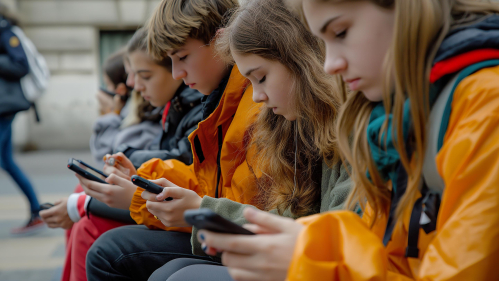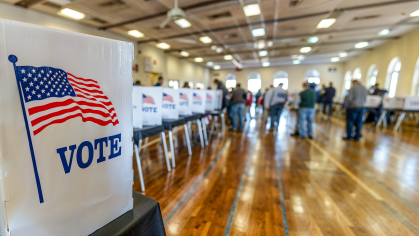Teens Are Fighting Social Media Overuse, Rutgers-New Brunswick Research Finds

Youth ages 13-16 are leveraging social media features to find moments of intentional pause during prolonged use
Teenagers are thinking about the effects of social media and designing their own exit paths, according to a Rutgers University-New Brunswick study.
Researchers found that teens are crafting their own “frictions” – defined as moments of intentional pause – to resist social media design that keep users constantly engaged. Older teens reported using reminder apps, calendars and a quick glance at the clock time on their phones as checks on their social media scrolling habit. Reminders from parents are a bigger factor for younger teens.
The research, published in International Journal of Communication, examined patterns of teenage social media use and analyzed the methods, motivations and reasons behind teens taking a break or stop using social media.
“Teenagers’ social media use is often cast as problematic and addictive, and moral panics are a persistent theme,” said Nikhila Natarajan, a doctoral candidate in the Department of Media Studies at the Rutgers School of Communication and Information. "While policymakers lag behind in technology regulation, teenagers are taking the lead to combat this."
Natarajan said while the broader commentary has focused on how teens use and linger on social media, there is a gap in scholarly research on how teens might be crafting strategies to resist the pull of “frictionless” design – commonly seen as an endless loop of content on TikTok – during a crucial developmental period.
The researchers conducted in-depth interviews with 20 teenagers from the United States and Canada and analyzed the results. Participants provided insights on three key items by age: whether teens voluntarily cease their use of social media apps; the methods teenagers employ to cease usage; and the motivations behind discontinuing usage.
Throughout the study, 13-16-year-olds demonstrated a trend of implementing minor adjustments in their media consumption habits to resist social media apps designed to captivate user attention. The researchers found teens increasingly are comprehending and actively managing their cognitive processes in more effective ways over time. This evolution in their perception of social media platforms coincides with their growing capacity to strategize, prioritize and manage their time efficiently.
“The asymmetries between teens’ developmental stages and social media design are many,” said Natarajan. “The always-on challenge is that teens’ still-maturing regulatory regions of the brain are dealing with twin tensions – an easily aroused reward system navigating social media design that eliminates stopping cues and offers instant but unpredictable gratifications.”
According to Natarajan, several forces are in play when considering why teens pause their social media use.
“It is rarely a single experience but more often a set of interconnected ones both online and offline that lead teens to think harder about social media effects and then take actions to self-regulate their use,” she said. “Participants’ responses highlight that they are constantly thinking about the ways that their social media experiences cause both physical and emotional discomfort. Across all four ages 13-16, teens highlighted negative experiences that they credit with shifting their social media behaviors.
Previous research on human development finds that adolescents’ planning and organizing skills are not fully developed during the ages of 13–16.
Importantly, the research highlights how participants come to understand the way social media design exacerbates tensions between the intentional and unintentional; between time well spent and time wasted.
The researchers said there is an opportunity for parents.
“An effective way for parents to talk to their teens about social media use is to focus on the gaps between teens' prioritizing and organizing skills and the manipulative design of social media platforms,” Natarajan said.
Future research should consider measures other than time spent and frequency of use to understand how teens engage with social media, the researchers said.
Participants in the study described social media as something they use when they have "nothing else to do" or are "bored." Comparing habitual versus more intentional uses of social media could be valuable for future research.
The study was advised by Amy Jordan, a Distinguished Professor of Journalism and Media Studies at Rutgers University and former co-editor of the Journal of Children and Media and co-editor of the book Children, Adolescents, and Media.


